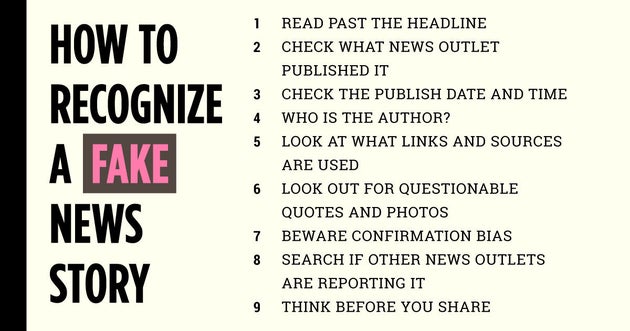How Fake News Does Real Harm
-
On April 14, 2014, the terrorist organization Boko Haram kidnapped more than 200 schoolgirls from the town of Chibok, Nigeria. Around the world, the crime became epitomized by the slogan #BringBackOurGirls—but in Nigeria, government officials called the crime a hoax, confusing and delaying efforts to rescue the girls. In this powerful talk, journalist Stephanie Busari points to the Chibok tragedy to explain the deadly danger of fake news and what we can do to stop it.
What news can you trust?
From "How To Recognize A Fake News Story," The Huffington Post, Nov. 22, 2016
Fact-Check
Journalists make sure any facts they report are correct. This is called fact-checking. As Alexios Mantzarlis, director of the International Fact-Checking Network at Poyntner says in NPR's "Fake or Real? How To Self-Check The News And Get The Facts," "fact checkers have a process for each claim they deal with. You'll isolate a claim that has something that can be objectively verified, you will seek the best primary sources in that topic. Find whether they match or refute or prove the claim being made, and then present with all limitations the data and what the data says about the claim being made" (Davis 2016). You can use these websites when you encounter a questionable news article or headline and verify whether the news is fake or authentic.
